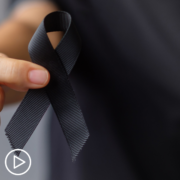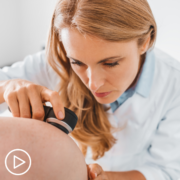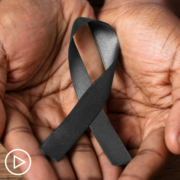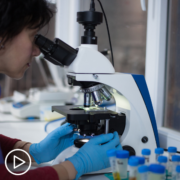Non-Melanoma Skin Cancer Subtypes | Are Some Populations More At-Risk?
Non-Melanoma Skin Cancer Subtypes: Are Some Populations More At-Risk? from Patient Empowerment Network on Vimeo.
Are some populations more at-risk for non-melanoma skin cancer subtypes? Expert Dr. Silvina Pugliese explains common subtypes, incidence rates, and risk factors linked with the subtypes.
Silvina Pugliese, M.D., is a Clinical Assistant Professor of Dermatology and Attending Physician at the Stanford Medicine Outpatient Center and Stanford Cancer Institute. Learn more about Dr. Pugliese.
[ACT]IVATION TIP
“Patients who have any of the risk factors discussed, so, for example, lighter-skinned, chronic sun exposure, and immunosuppressed for any reason, whether due to an underlying medical condition or a medication, or who have genetic mutations or history of radiation or any environmental factors that put them at risk, should be aware that looking at their skin for skin cancers is very important, and that they should see a doctor, a dermatologist, if they notice anything that looks suspicious on their skin, that warrants for their evaluation.”
Download Guide | Download Guide en español
See More from [ACT]IVATED Non-Melanoma Skin Cancer
Related Resources:
Transcript:
Mary Leer:
All right. Dr. Pugliese, what are the various subtypes of non-melanoma skin cancers, and are certain populations more susceptible to getting non-melanoma skin cancers than others?
Dr. Silvina Pugliese:
So there are a number of subtypes of non-melanoma skin cancers. The most common one is called a basal cell cancer, that occurs in about 4 million, there are about 4 million cases of basal cell cancer in the United States every year, and it’s considered a skin cancer related to keratinocytes, the most common type of skin cell. The second most common type of non-melanoma skin cancer, is called a squamous cell cancer, also arising from keratinocytes with about 2 million cases diagnosed each year in the United States. There are also less common types of non-melanoma skin cancers, including Merkel cell carcinoma, which arises from Merkel cells and sebaceous carcinoma.
When we think about risk factors, there are a number of risk factors that put certain populations at a higher risk of developing non-melanoma skin cancers. So, for example, one thing that we think about often is lighter skin. So patients who have blonde hair, red hair, freckles, who are more likely to sunburn, who have lighter skin, are going to be more prone to the UV damage that can cause some of these skin cancers to develop. Chronic sun exposure is closely interplayed with that concept, so patients that live in a warm climate, are closer to the equator, live at higher altitude, have outdoor hobbies or outdoor jobs. There are certain medications that can also confer a greater risk of developing non-melanoma skin cancers.
So medications that suppress your immune system or that making more sensitive to light or getting sunburns from UV. And any condition that suppresses the immune system. So, for example, patients that have undergone a solid organ transplant, like a heart transplant or a lung transplant, or patients that have a diagnosis such as chronic lymphocytic leukemia. We know that those patient populations are at much higher risk of developing non-melanoma cancers.
There are other factors that are environmental. So, for example, if there is arsenic in well water that is being bathed in, then that could also lead to development of squamous cell cancer, smoking, chronic wounds or scars can put certain patients at increased risk of squamous cell cancer, certain genetic mutations, and then a history of any radiation, for example, for the treatment of other types of cancer.
So my activation tip for this question is, there are a number of non-melanoma skin cancers that can present, the most common ones being basal cell cancer and squamous cell cancer. Patients who have any of the risk factors discussed, so, for example, lighter-skinned, chronic sun exposure, and immunosuppressed for any reason, whether due to an underlying medical condition or a medication, or who have genetic mutations or history of radiation or any environmental factors that put them at risk, should be aware that looking at their skin for skin cancers is very important, and that they should see a doctor, a dermatologist, if they notice anything that looks suspicious on their skin, that warrants for their evaluation.
Share Your Feedback:
Create your own user feedback survey



















